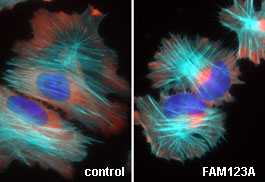Andrew Tucker, PhD, used his graduate experience at UNC to help build a new kind of mammographic imaging machine now in use in a clinical trial at the North Carolina Cancer Hospital.
Name: Andrew Tucker
Birthdate: November 25, 1985

Hometown: Mineral Springs, NC
Education: BS, biomedical engineering, NC State, 2009; PhD, UNC/NCSU Joint Department of Biomedical Engineering, 2014
Goal: Improved mammographic imaging
Dissertation: Development of a stationary digital breast tomosynthesis system for clinical applications
Mentors: Otto Zhou, PhD., Jianping Lu, PhD
Extracurriculars: Church work, dog play, time spent with wife
History:
“When I was little, my mom would always say she wanted me to be a doctor. However, math was my forte. I knew I wanted to be an engineer. As an undergraduate at N.C. State, at first I was in the material science engineering program, but that did not seem like a career path I wanted to pursue. After two weeks, I changed my focus to biomedical engineering. I really took to it, and, you know, it’s kind of close to what my mom wanted.”
Why biomedical engineering?
“I like to tinker with things and there are a lot of really interesting applications in the medical industry. At NC State I studied instrumentation. I built a heart rate monitor and a few other small medical devices. Plus, the program had a very interesting senior design requirement – a year-long course during which I worked at Wake Med Hospital and did a needs-assessment in a simulation lab, where doctors can practice different procedures. We built an induced hypothermia simulator, which they didn’t have. There wasn’t even one on the market.
“To my understanding they still use what we built. It was like a human; it has a working circulatory system. We put a catheter in there to cool down the system. It was a pretty neat device. It was something they needed and it felt like a big accomplishment to finish my undergraduate studies.”
Why UNC/NCSU’s BME program:
“I thought I’d go into the industry, working for a company that made small medical devices. I applied to some jobs, but back then the economy was hurting and some of those small companies weren’t doing so well. My back-up plan was grad school. I applied to this BME program – it was the only one I applied to – but eventually I realized that furthering my education and getting a PhD was exactly what I wanted to do.”
Why Otto Zhou’s Lab?
“I didn’t join a research group when I first came here, but then I got an email from the department saying Etta Pisano had an opening for a graduate student. I had done medical imaging; it was interesting. And luckily she hired me. I worked there for two semesters until she left UNC in May 2010. She asked me to join her lab in South Carolina, but I hadn’t finished my graduate coursework, and my girlfriend, who would become my wife, still hadn’t graduated from NC State. Eventually, my old professor at NC State Dr. Lalush emailed me about an opening in Otto Zhou’s lab, which worked on breast imaging, which is what I worked on at Etta Pisano’s lab. I applied and got the position.”
The research:
We built a new imaging system that uses carbon nanotube-based x-ray sources, which were developed here at UNC. The only FDA-approved 3D x-ray system for breast imaging uses a single x-ray source that rotates 15 degrees. But that rotation causes motion blur, which reduces the spatial resolution. Doctors really need good spatial resolution to visualize microcalcifications in breast tumors, which can indicate if a tumor is benign or malignant.
“As a result of that blurring, clinics do a separate 2D mammogram, which doubles the radiation dose to the patient. That’s problematic.
“Otto Zhou’s lab devised a way to use x-rays to make images that had better spatial resolution so patients wouldn’t need to undergo that mammogram. They developed this before I joined the lab. I did a lot of the grunt work essential for building the system. I characterized it, optimized it, and showed that it works.
We have been recently working with Dr. Yueh Lee and Dr. Cherie Kuzmiak to conduct a clinical trial. I helped build the system that is now located in the Department of Mammography in UNC Cancer Hospital. We imaged our first patient in December of 2013.
The future:
“Some labs have expressed interest in me becoming a postdoc, but decided against that. I like doing research but I think it’s time to move on, and working in the industry has always been my goal.”
In late Feburary, 2014, Andrew Tucker defended his dissertation. As professors asked questions and Tucker answered, he noticed in the audience his mother and father tearing up. At the end, his dissertation committee met and decided that Tucker was successful in his defense. So, like his mom always wanted, Andrew Tucker became Dr. Tucker. In early March he interviewed at Xinray Systems, a UNC spinoff that made the tube in the new breast imaging system Tucker helped build. “They offered me a job, and I took it.” His first day was Monday March 17.
